|
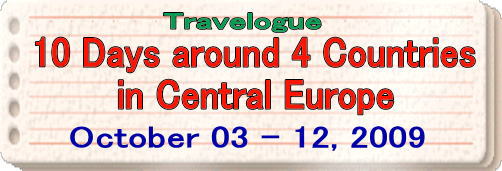 |
|
|
|
(S): Slovenia, (C): Croatia,
(M): Montenegro, (B): Bosnia-Herzegovina |
|
|
3. Dubrovnik, Croatia
October 7 |
|
|
I woke at 6:00 by wake-up call from sleeping well.
Breakfast at 6:30.
Back to the room, radio gymnastics as usual, a daily routine during the
travel. I start the radio-1 exercise, matching with a piano accompaniment
in my head. Emiko follows my performance. Next, simple exercise of a neck
and a lower body. The finish is the radio-2 exercise.
I am now a little irritated with my present body remembering conversely
the days being able to rub the ground by fingertips with a bending and
stretching exercise, or to see the sky face up. But loosening up the muscles
just for ten minutes has been a good help for my light daily action.
Even this simple health training is not always done at home nowadays. Have
to continue.
|
|
|
Who should I thank for the weather? It is going to be fine and mild with
no wind. The Mediterranean climate!
We started on the half-day sightseeing in the city Dubrovnik at 8:15. This
is one of the tour highlights.
|
|
Dubrovnik is a small town in the very south of Croatia facing the Adriatic
Sea. Its Luza Square and the street are along the sea, and the row of something
like palm trees shows the warm area here.
We enjoyed the free time walking on the paths lined by the houses with
roofs of beautiful brick-colored tiles, and overviewing many yachts on
the dazzling sea. |
|
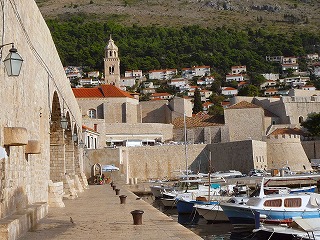 |
|
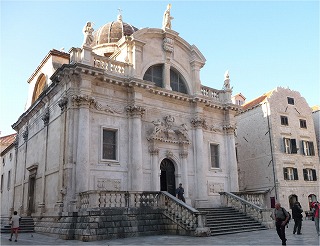 |
|
|
Next, we walked on Placa Street to Pila Gate, the west side of the city.
Through the castle gate, we toured around the castle wall of two km per
lap. Just like going up the slope of the Great Wall of China, we aimed
at the so-called keep, and finally reached the top, struggling with great
ups and downs.
Besides the castle wall itself, the surrounding scenery on the way was
so beautiful with roofs and roofs of brick-color, sheer rock cliffs and
the Adriatic Sea that we forgot the fatigue and snapped away.
|
|
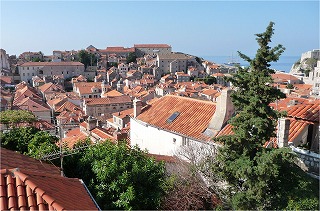 |
|
 |
|
 |
|
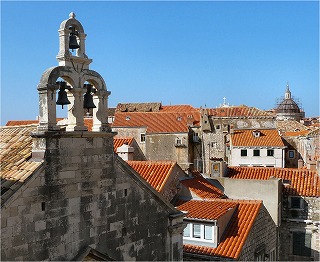 |
|
"4" is quatre and "44" is quarante-quatre in French.
"Quarantine" in English was a stock word when the manned space
rocket returned. I vaguely noticed the relationship of the "quarantine"
with "40" at that time.
On the way going up the castle wall of Old Town with many ups and downs
the guide stops and points out the left side of the bay widened from the
port of Dubrovnik.
"All of you see, the long and narrow building on the seacoast over
there. It is called "Quarantina", a former quarantine." |
|
|
The plague is said to have prevailed on the eastside of the Adriatic Sea
in 14th century. In order to prevent its infection, the ships from abroad
were kept at the distant coast, and all the crews were quarantined in that
building for 40 days considered as the incubation period. The Italian word
"40, quarantina" became the origin of "quarantine".
This building is its trace.
|
|
One question about the country name of Croatia.
The official name is Republika "Hrvatska" in Croatian. Why is it "Croatia" in English? Sorry, I have not
checked it yet. |
| - - - - - - - - - - - |
|
After lunch, we drove south 200 km to Kotor, Montenegro, and looked around
the Old Town there for about one hour.
Then turning head over heels, we took a shortcut crossing the bay by boat.
It helped us to get back to Dubrovnik in the early evening.
The city of Kotor is referred to in the next chapter.
|
|
|
The pride of Dubrovnik called "the pearl of the Adriatic Sea"
is not only the scenery in the daytime. Though I missed the night view,
the landscape with the lingering sunlight was also super.
|
|
 |
|
| Part 3 Reading: 6' 42" |
|
|
|
|
|
|
|
(S): Slovenia, (C): Croatia,
(M): Montenegro, (B): Bosnia-Herzegovina |
|
|
| Close |
|